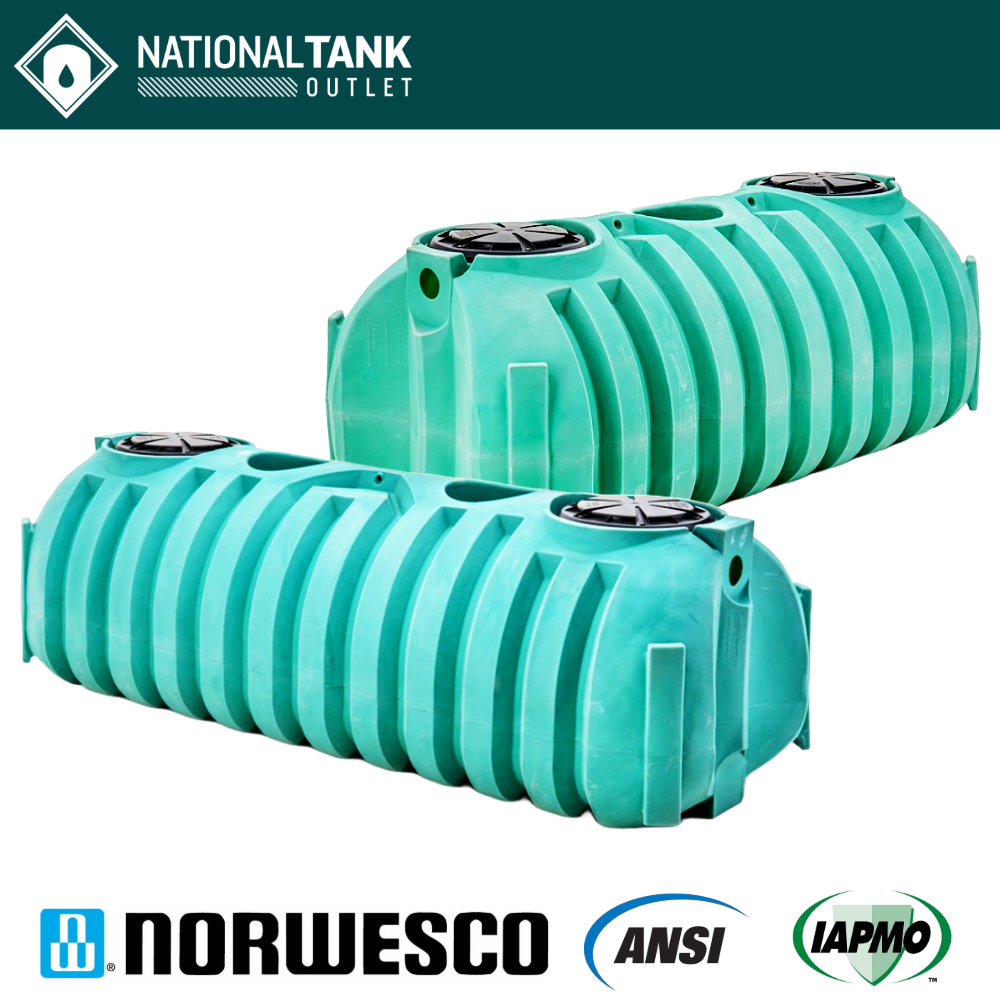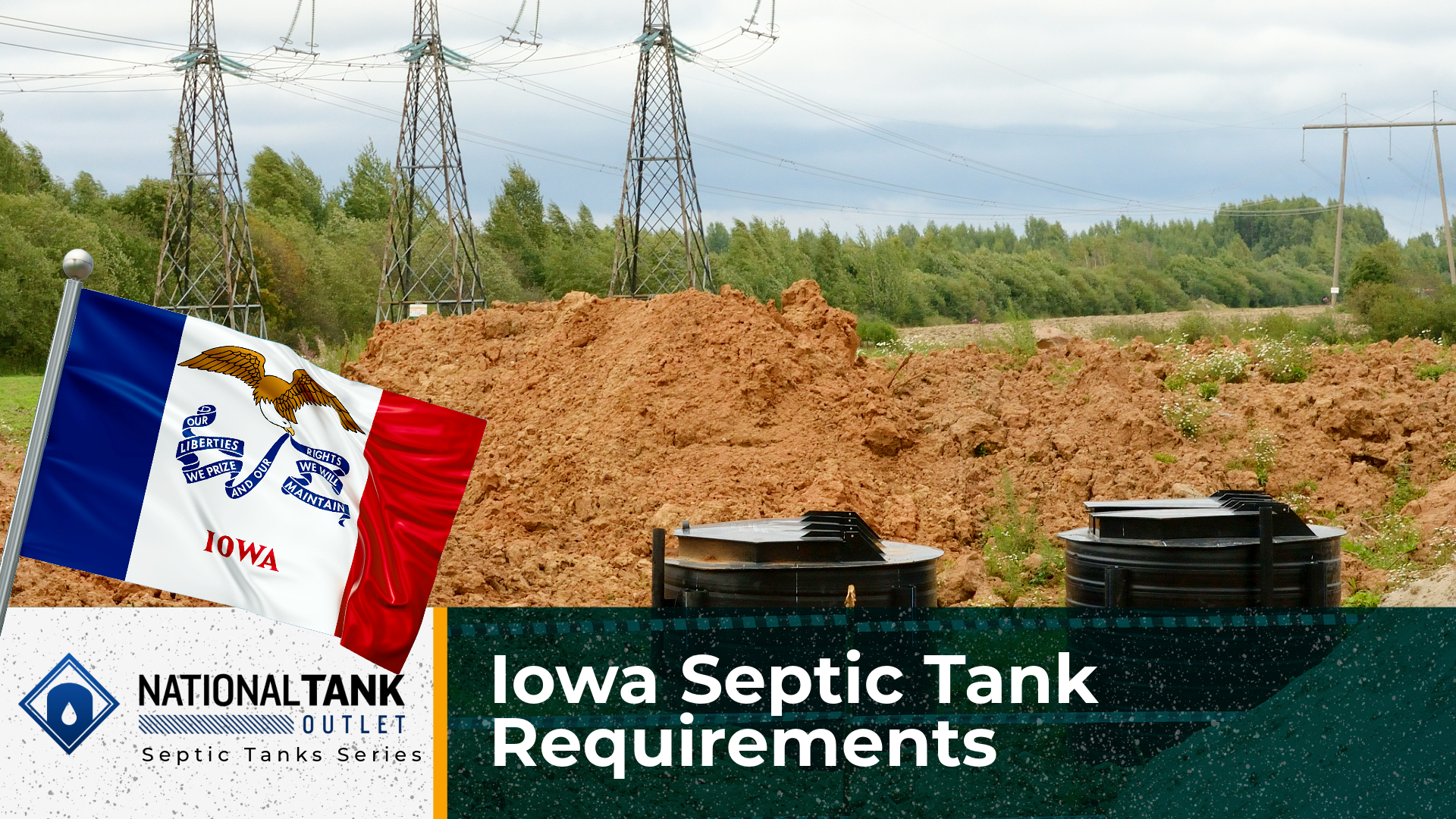
Many Iowa residents have a home, property, or farm that does not have access to a public wastewater sewer system. For these Iowans, they must rely on a wastewater treatment facility located on their own property, often in their own backyard, and beneath the surface – a septic tank system. For many homeowners, landowners, and farmers in Iowa, a reliable septic system is essential to managing the wastewater their property creates every day safely and efficiently. Whether you live in a rural area, outside the city, or own a farm and need to install, repair, or modify a septic tank, understanding the state’s regulations for septic systems is vital. With nearly one-third of Iowa residents relying on a septic tank for their wastewater disposal needs, it’s important to navigate these rules effectively to stick to the rules as well as protect your property and the environment.
In this comprehensive guide, we will unpack Iowa septic tank requirements, making it easier to ensure compliance and feel confident your system is being prepared, planned, and installed correctly. From obtaining necessary permits, state codes, and DIY installation, to septic tank sizes and site evaluations, we cover everything you need to know about septic systems in the Hawkeye State.
Iowa State Septic Tank Regulations

The Iowa State governing agency responsible for setting the regulations and requirements for septic tanks and septic systems is the Iowa Department of Natural Resources (IDNR) and its Environmental Protection division. The IDNR Environmental Protection has a Division of Water Quality for Private Septic Systems that heads the department’s oversight on septic tank regulations in Iowa State. Iowa State septic tank regulations are outlined in the Iowa Administrative Code 567 (IAC) Chapter 69 Private Sewage Disposal Systems and must be adhered to for legal compliance.
To summarize common, important points regarding septic tanks, systems, and installation from the 567 IAC Chapter 69:
- Tank Construction: Septic tanks will be made from watertight concrete, fiberglass, or polyethylene plastic, be resistant to corrosion or decay, and be engineered to withstand the pressure strain of burial without collapsing or rupturing.
- Size and Capacity: Tank size is regulated based on property bedroom count and a 1250 gallon septic tank is the state-regulated minimum size for residential septic systems.
- Setbacks: Systems must be strategically located a set minimum distance from various property features and utilities.
- Inspections and Permits: Installation and/or modification (alterations) in Iowa will require permits and inspections.
- Public Treatment Works: No septic tank system is permitted for installation, repair, or alteration if a public treatment works is available or mandated for use by local ordinance.
The Iowa Department of Natural Resources primarily oversees public sewage systems. In Iowa, regional enforcement of the state’s regulations including permitting and inspections is handled by local Environmental Health Departments or local health units belonging to state counties or districts. In most cases, these local health units are the main point of contact for individuals, real estate agents, lenders, or certified installers needing to file for a permit, schedule a site evaluation or inspection, or ask questions. The IDNR maintains a list of contacts and their information for the local health units.
Iowa Septic Tank Definitions
Iowa regulations define a working septic tank system as a Private Sewage Disposal System. The Iowa Administrative Code 597 IAC Chapter 69 defines private sewage disposal systems as “a system which provides for the treatment or disposal of domestic sewage from four or fewer dwelling units or the equivalent of less than 16 individuals on a continuing basis, including domestic waste, whether residential or nonresidential, but not including industrial waste [and] includes, but is not limited to, septic tanks, holding tanks for waste, chemical toilets, impervious vault toilets and portable toilets.”
Iowa legal codes and regulations allow for the installation and use of conventional and alternative septic tank systems including pressure dosing, mound systems, sand filters, media filters, and aerobic treatment units. The conventional, gravity fed septic tank system is the most common sewage disposal system type installed and used in Iowa State. These can be conventional gravel trenches or gravelless trenches using alternative media or substrate for operation.
Can I Install My Own Septic Tank in Iowa

Yes, and no, a homeowner may or may not be able to install their own septic tank in Iowa depending on local and/or regional rules and the capabilities of the homeowner. The variance in rule authority and permissibility is often due to the site conditions, geology, suitability for different septic tank systems, surrounding properties, and population density. In general, self-installation is allowed as long as the homeowner can perform all the necessary steps to satisfy compliance with IAC 597 Chapter 69 codes. As an example, Warren County, IA clearly states a homeowner can install their own septic tank system but must complete the process in its entirety without outside hired help.
For DIY septic tank installation in Iowa, here are some key points to consider:
- Determine Eligibility: To determine if self-installation is allowed, the best option is to contact your local Iowa health unit and ask for current information and approval.
- Permit Requirement: Homeowners must obtain a permit from their local county sanitarian or health department before beginning the installation process. A permit fee will apply and can range around $400 for homeowner installation.
- Site Suitability Assessment: The site must be evaluated to ensure it is suitable for the intended septic system, considering factors like soil type, groundwater depth, percolation rates, and more.
- Building to State Standards: The septic system design and installation process must adhere to state standards and guidelines for tank size, engineering, components, placement, and leach field configuration. (See our additional resources at the end of this post for helpful information on DIY septic tank installation in Iowa.)
- Licensed Installers: While a landowner may be able to install their own system, using an experienced, certified septic tank contractor is often recommended to ensure compliance and proper installation.
- Inspection Requirements: After installation and before backfilling, the system must be inspected by certified personnel, often from the administrative authority, to verify compliance without deviation or modification.
By following this overview and adhering to Iowa State regulations, a homeowner can move toward the steps to successfully install their own septic tank system and ensure they meet all the guidelines necessary for protecting public health and the environment.
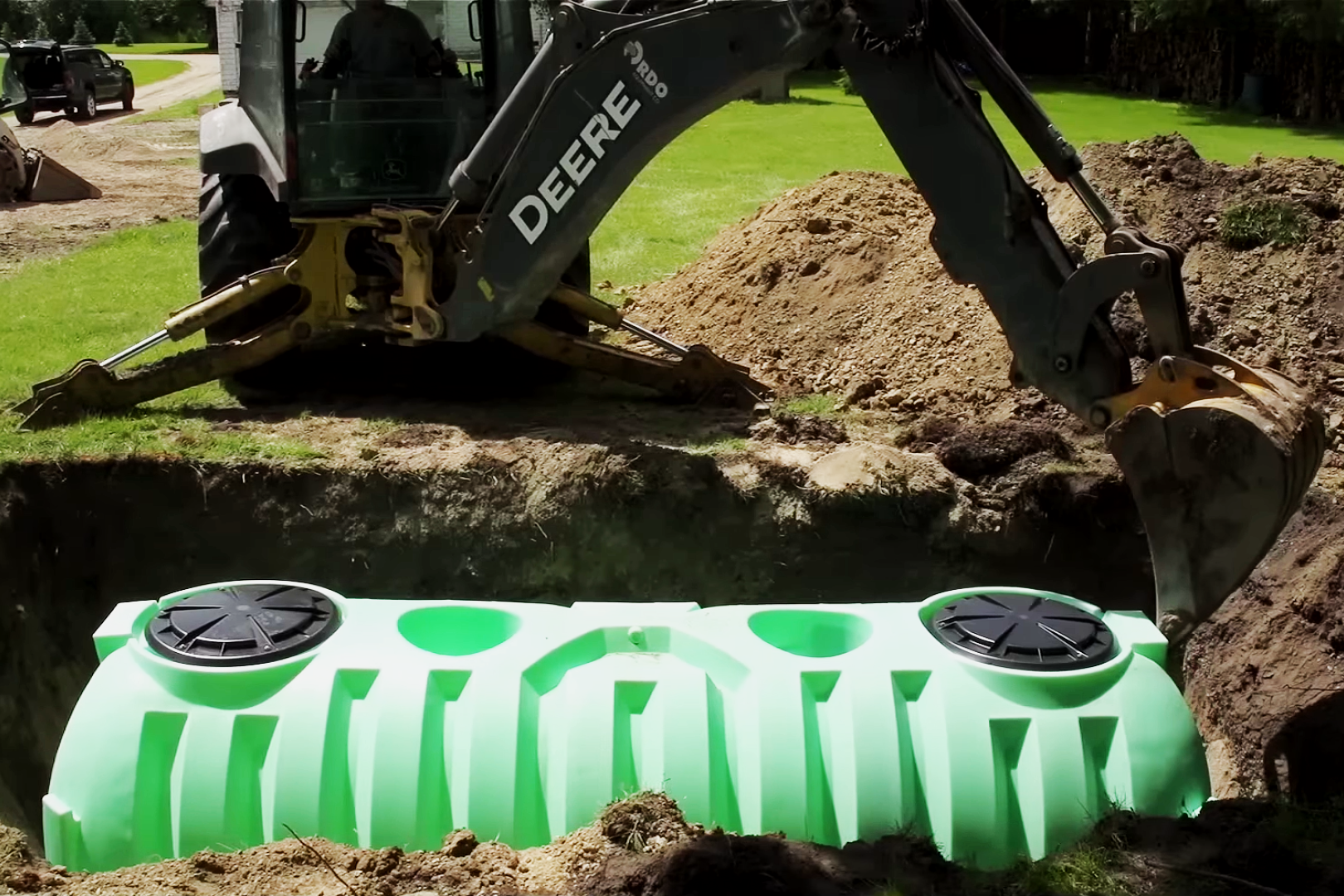
How to Install a Septic Tank in Iowa
Installing a septic tank in Iowa is a stepwise process that, in general, requires: (1) have or obtain an official site address, (2) have a site evaluation, soil analysis, and/or percolation test performed by a state licensed engineer or soil scientist, (3) determine the septic tank system type suitable to the site based on the results of the evaluation, (4) prepare a system design and plan to submit to the department during the permit application process, (5) apply for a septic tank construction permit and pay any required fees, (6) after construction and before burial of the completed system, have the system inspected by the governing department, and (7) after passing inspection, properly complete the backfill process – the system is now ready for use.
For Iowa residents considering DIY septic tank installation, we recommend you review documents and information provided by the Iowa Department of Natural Resources to assist in your preparation.
- IAC 567 – 69.8 (455B) Primary Treatment – Septic Tanks
- IDNR Residential On-Site Wastewater Treatment – An Overview
Steps to Installing Your Own Septic Tank in Iowa
Recommended steps for DIY septic tank installation in Iowa include:
- Read and understand the codes and standards outlined in 597 IAC Chapter 69.
- Complete the necessary evaluations and activities for permit submission; e.g., site evaluation, system type and design plan, permit application filing.
- Determine the septic system type for your site and the components necessary for installation.
- Establish a personal installation procedure for how you will carry out the construction.
- Create a list, find sources, and/or schedule for all needed components, materials, and equipment such as a backhoe, sewer pipe, gravel, the septic tank, and backfill material.
- Complete the installation, following all manufacturer’s installation guidelines, and pass state inspection.
Note: Septic tank manufacturers provide an installation manual with their products that outline the proper procedure for excavating, positioning, and backfilling a septic tank.
Permit Requirements
In Iowa, septic tank installation permits are reviewed and approved by local health units or environmental departments. This means the individual permitting process, requirements, and fees may vary by state county. Most governing departments require the same basic information such as property address and other relevant property information, the results of a site evaluation which often must be performed by a professional engineer or soil scientist, project details including a design or plan for the system to be installed, and payment of the necessary filing fees.
After Permit Approval
After a septic tank permit has been filed and approved by the local administration, the construction process can begin. It is recommended to not purchase anything until the permit has been approved and received. Permits are often good for up to one year from the date of approval, providing sufficient time to acquire all the needed parts, materials, and equipment. Iowa counties may allow an extension request on the permit if more time is needed. Renting and delivery of digging equipment, such as a backhoe, can take anywhere from a few days to a few weeks. Ordering and receiving a septic tank online, such as from the National Tank Outlet, can take four to eight weeks or more for fulfillment depending on supply chain and delivery logistics.
At this point, you should have a solid understanding of the type of septic system your property requires, the type and size of septic tank, the administrative rules, and an installation plan prepared to begin construction.
After Construction
After septic tank construction and installation have been completed and before burying any subsurface components, an inspection must be performed by the assigned local health officer or his or her designated representative. Inspection ensures the system has been properly installed according to submitted plans, complies with regulations, and has not been modified in any way. If the construction passes inspection, full and final burial can be completed, and the new septic tank system can be put into service.
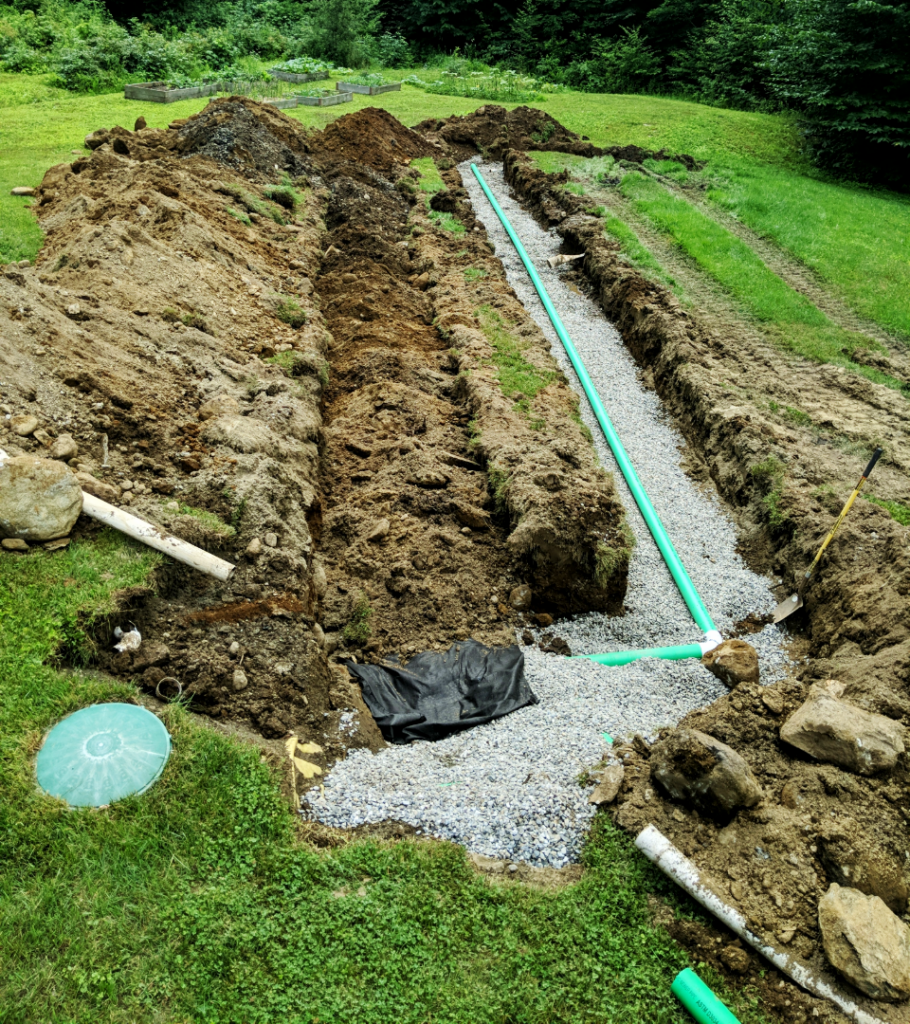
Should I Install My Own Septic Tank System in Iowa
Self installation of a septic tank system, although permitted in Iowa per county, is a fairly intensive undertaking, one that requires a thorough knowledge of the state’s rules and professional level capability to safely and satisfactorily complete the installation to compliance.
If second-guessing DIY installation of your property’s septic tank or if you prefer to have a certified company complete the job, see here for a list of Iowa certified installers to find a septic tank installer near you.
Can a Polyethylene Septic Tank Be Installed and Used in Iowa
Yes, polyethylene septic tanks can be installed and used in Iowa, provided they meet certain regulations and design specifications. Polyethylene septic tanks are a popular choice due to their corrosion resistance, physical strength, and lightweight design that makes for easy handling, transport, and installation. Here are some key points to consider:

- Compliance with State Standards: Polyethylene septic tanks must comply with Iowa state regulations for design, size, components, and installation requirements as specified by the state in 597 IAC 69.
- Durable and Resistant: Polyethylene tanks must be engineered to withstand the strain placed on the tank by the earth and hydrostatic pressure as well as the effects of soil chemistry.
- Watertight: A polyethylene septic tank must be watertight, meaning resistant to water infiltration and exfiltration. Rotationally molded poly septic tanks are best for this requirement as they are one piece and seamless.
- Two Compartments: Iowa septic tanks must be two compartment tanks or single compartment tanks connected in series.
- Baffles and Screens: Iowa septic tanks must include baffles at the tank inlet and outlet ports. Common 4-inch Schedule 40 DWV PVC sanitary tees can be used for the inlet and outlet baffles. The outlet baffle must include an effluent screen (effluent filter).
- Manway Risers: Septic tank manway risers are required to bring each septic tank lid and manway port to surface grade for access to allow inspections or maintenance.
Local authorities may have different requirements that override certain state requirements. Before buying a polyethylene septic tank, or any septic tank, consult your local Iowa health unit to determine if they have specific rules that may restrict its use and to verify your septic tank of choice is approved for use. Before-purchase is stressed here because it can be very difficult or even not allowed to return a septic tank after receipt if you later determine it cannot be used.
For polyethylene septic tanks, Norwesco is a notable and trusted manufacturer with approval in most states across the US. Norwesco manufactures IAPMO certified, two compartment, rotationally molded polyethylene septic tanks with the sizes and components needed for compliance. If looking for Norwesco septic tanks for your project in Iowa, the National Tank Outlet is a trusted nationwide supplier with some of the industry’s most competitive pricing.
Key Iowa Septic Tank Requirements
Permits
In Iowa, a septic tank installation permit is required before any construction or installation activities can begin. Certain properties may not be suitable for a conventional septic tank system. In such cases, there are several alternative septic system types to choose from that are approved by the state. Having a site evaluation performed is the primary way to determine the suitability of one system type over another.

Site Evaluations
In Iowa, for the septic tank permitting and installation process, it is legally required to have a site evaluation performed, which must be done by a professional engineer or soil scientist. A site evaluation will investigate existing geological information regarding your property and will conduct on-site tests and surveys to determine the conditions and characteristics of the local soil, underground geography, topography, and relevant nearby surface waters or utilities.
A key component of the site evaluation is the soil percolation test which will determine the water absorption rates and can help in deciding on the permitted locations or optimal location for the septic system. This overall data and review can be used by the evaluator to recommend or specify the type of septic system suitable for the property. Try the following database provided by the Soil Science Society of America to search for a professional soil scientist in Iowa.
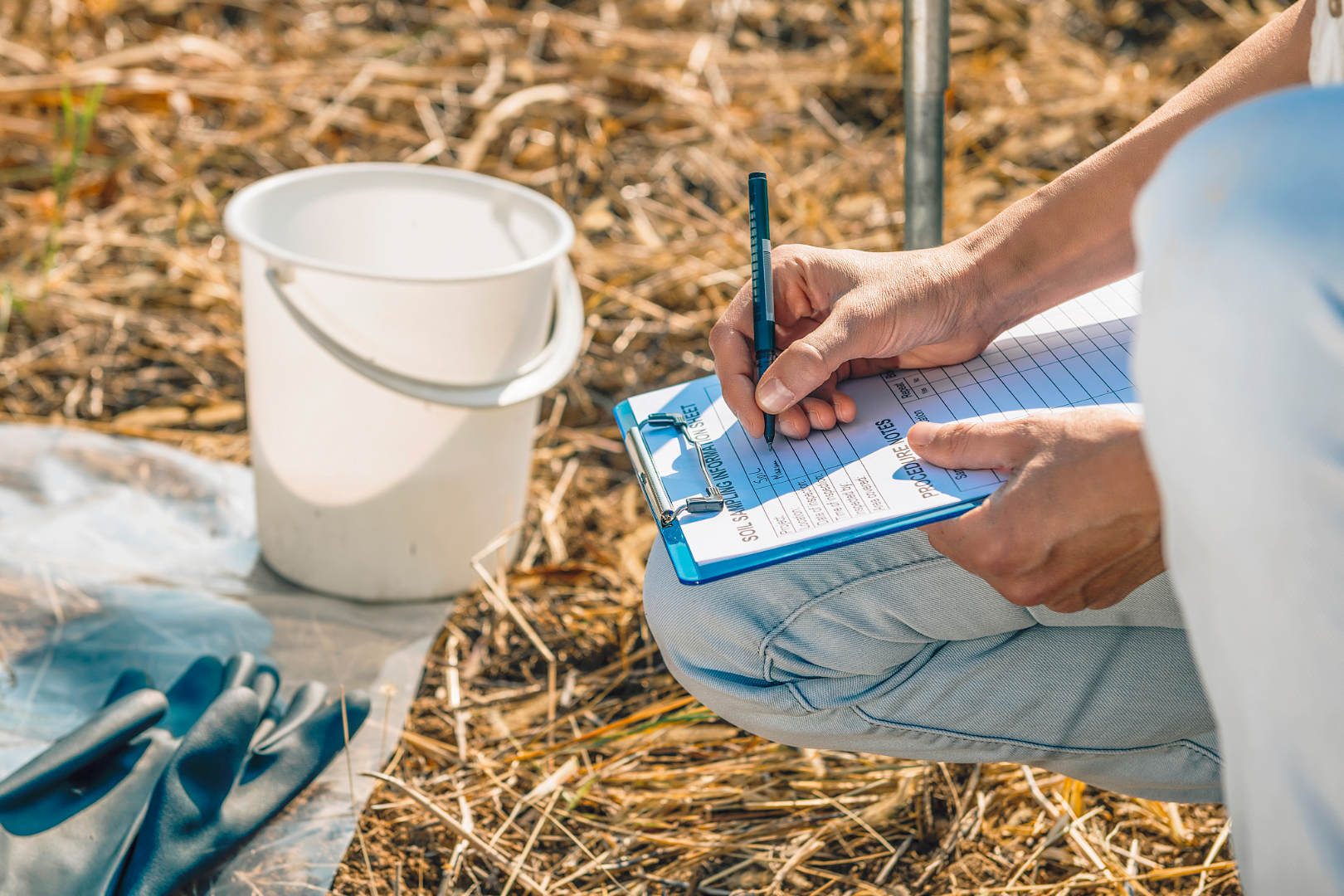
Septic System Siting and Design
Septic tank systems require sufficient space to operate and distance from nearby wells, surface water, or utilities to prevent damage or contamination. This is referred to as setback distances. Determining the best placement and design is often part of or a result of the site evaluation. In Iowa, the Chapter 69 of Iowa Administrative Code 597 maintains a minimum standard setback distance for a septic tank system relative to different, potentially sensitive features.
See the following table of septic tank setback distances required in Iowa.
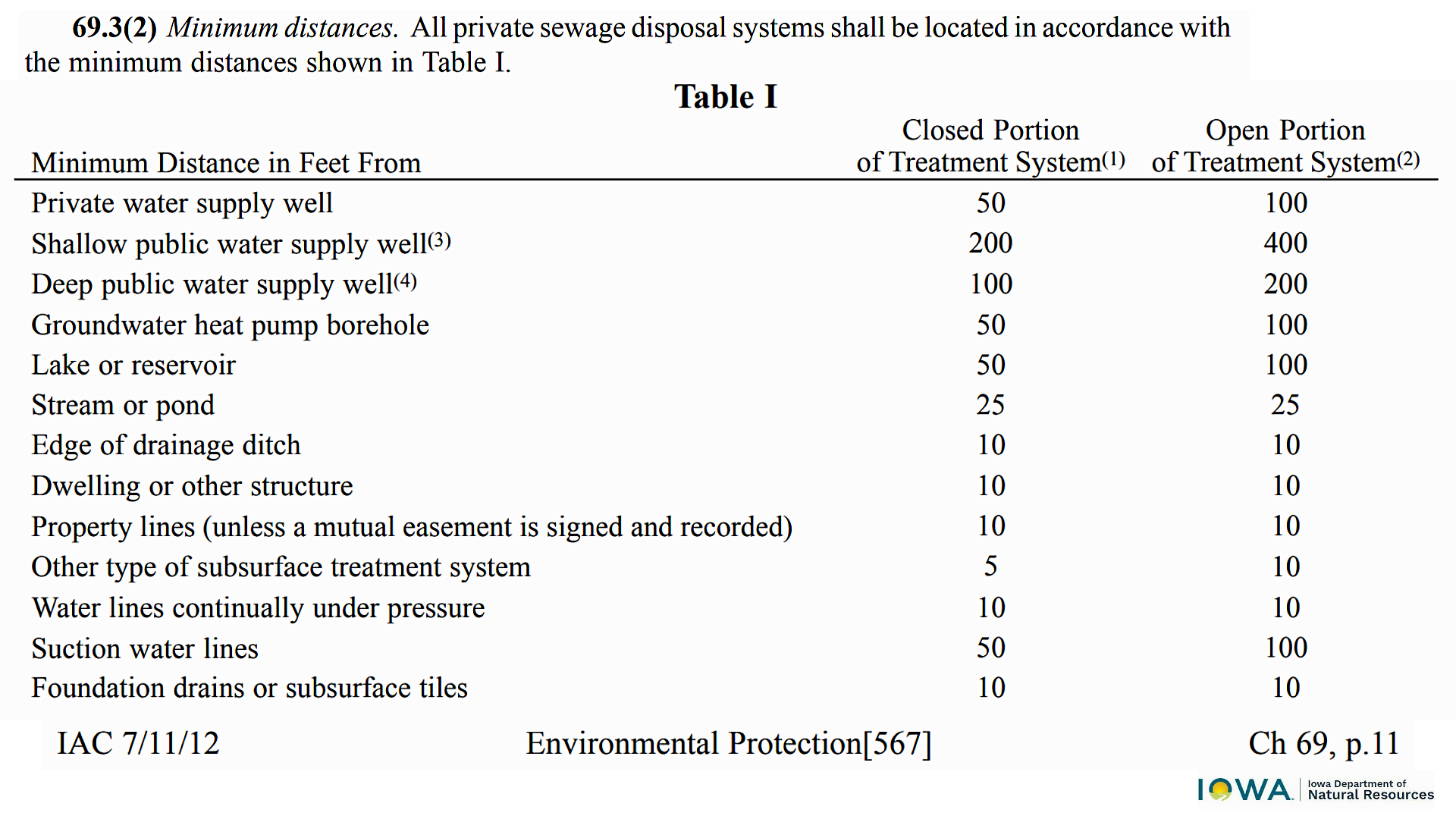
System Components
The components needed to complete a septic tank system will depend on the system type: either conventional gravity fed septic system or an alternative system. Iowa state approved septic tank system alternatives include aerobic treatment units, mound systems, sand filter systems, pressure dosing systems, and media filter systems. More information on these system types can be found on page 5 of the IDNR Residential On-Site Wastewater Treatment. A designer, contractor, or professional engineer can assist in determining the best system option for your property and will need information on local soil types, percolation test results, topography, groundwater depth, nearby surface water distances, lot size and layout, and expected water use and wastewater quality from the property.
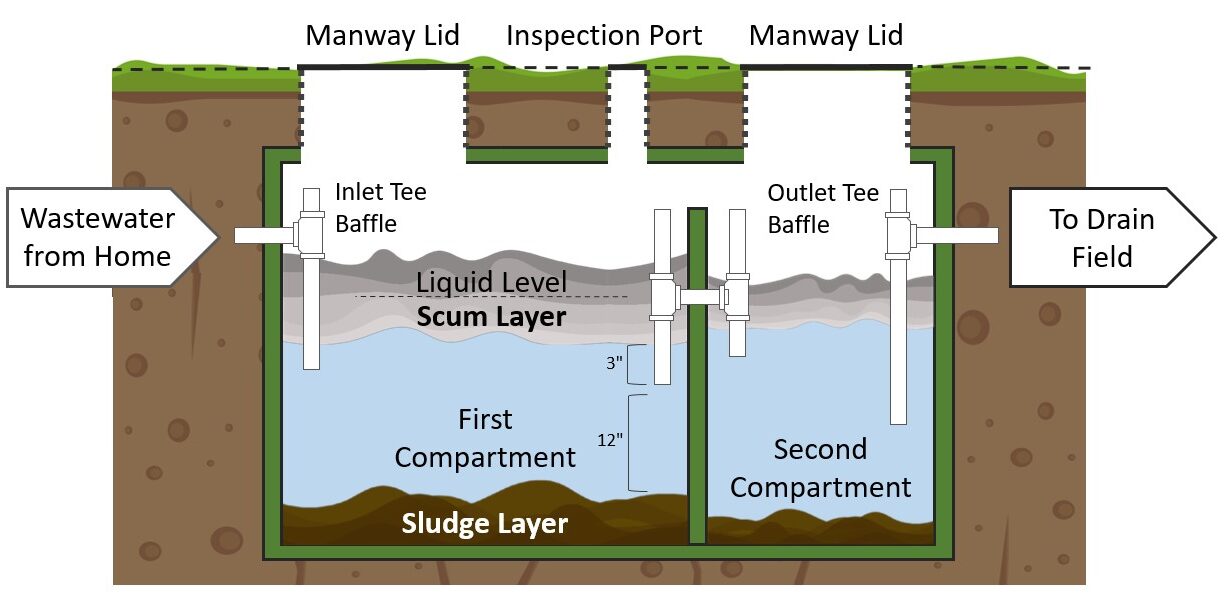
Septic Tank Sizes in Iowa
Iowa state administrative code specifies the minimum required sizes for septic tanks to be used in a conventional, gravity-fed septic tank system for a residential property. Iowa state septic tank sizes start at 1250 gallons and increase based on the number of bedrooms. According to Iowa 597 IAC code IAC codes, a 1250 gallon septic tank is required for homes up to 3 bedrooms, a 1500 gallon septic tank for a 4 bedroom home, a 1750 gallon tank for a 5 bedroom home, and a 2000 gallons for a 6 bedroom home.
See the following table that summarizes minimum septic tank sizes for on-site sewage disposal systems in Iowa:
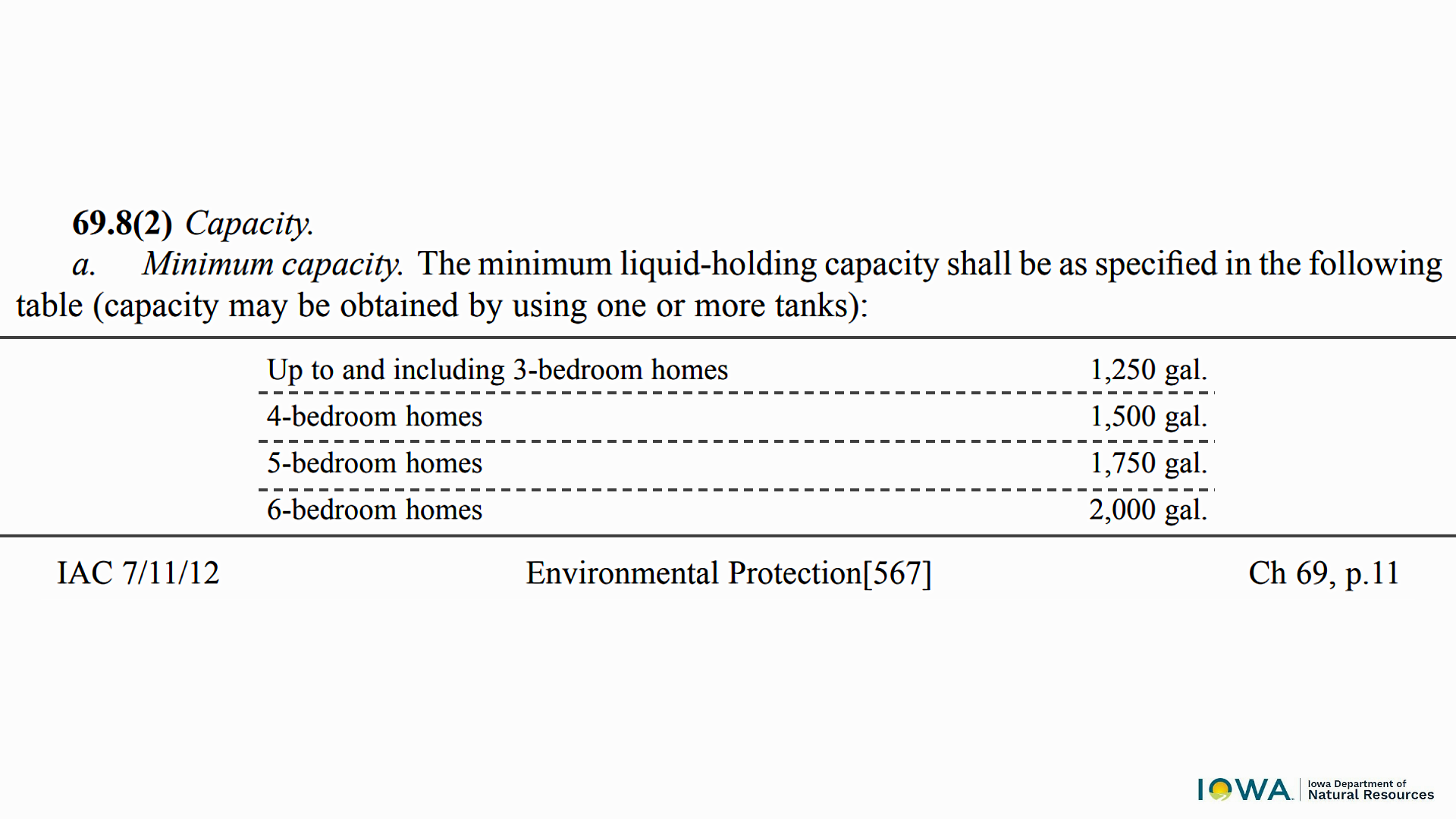
Inspections
Following construction activities and at the point of backfill, the completed septic tank and drainfield system must remain unburied for inspection. Inspection must be performed by state personnel or their representative. Therefore, a homeowner should contact their local health unit to schedule an inspection as soon as possible. Time is important here as you don’t want to leave the septic system exposed to the elements where precipitation could cause damage due to water infiltration. After the system has been inspected and passed, the new system can be fully backfilled and put into service.

Maintenance and Pumping
Regular pumping and cleaning are critical to maintaining the efficiency and operation of a conventional septic tank system. Pumping frequency will depend on tank size, usage, and soil conditions. Common pumping recommendations are to have the septic tank pump every 3 to 5 years, given the septic tank is sized appropriately for the property. The effluent screen should also be inspected and cleaned at this time if necessary. Failure to maintain a septic system through regular pumping can result in failure or damage.
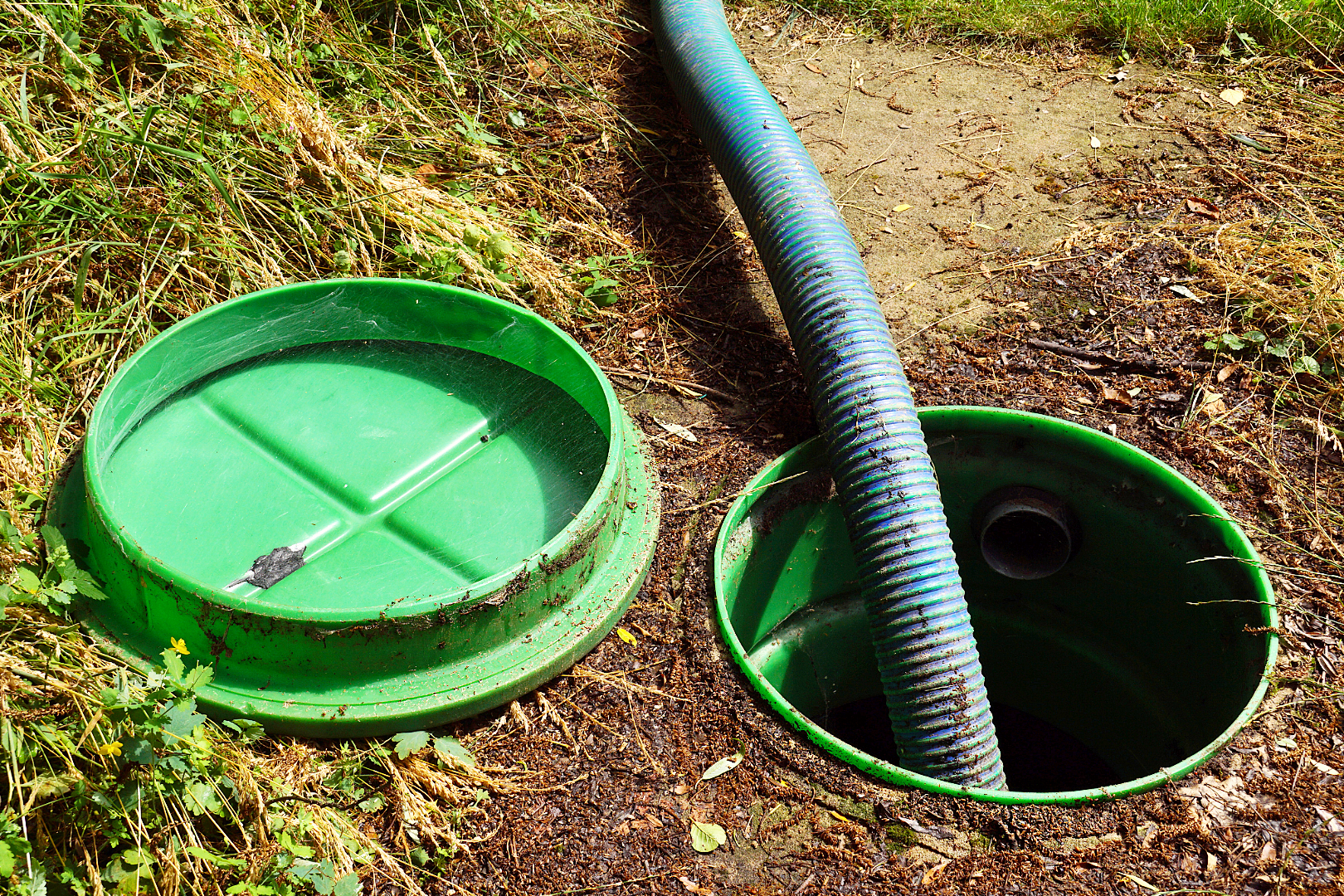
Additional Regulations
The State of Iowa maintains a Time of Transfer (ToT) law that requires every home or building served by a septic system to have that septic system inspected prior to the sale or deed transfer. Whenever selling a property with a septic system, a state-mandated inspection must be performed by a certified DNR inspector. Additionally, the owner may have to provide evidence that the septic tank was being properly maintained and/or has been pumped out within three years before the inspection. See the following for more information on Iowa’s ToT program and requirements.
Need a Septic Tank in Iowa? Choose the National Tank Outlet to Supply
Ensuring a septic tank system is being installed or has been installed according to all Iowa’s regulations is vital to long lasting performance, limited problems, and preserving public health and the environment. As a property owner in Iowa, you have the responsibility to install and maintain a proper wastewater treatment system or to have one installed by a respectable, trustworthy professional.
If you’re in the market for high quality, durable, and cost effective polyethylene septic tanks, consider us here at the National Tank Outlet. With a broad selection of poly septic tanks for sale, in stock, and made right here in the USA by the nation’s most trusted manufacturers, we provide the solutions to your project needs. Don’t compromise on quality – choose the National Tank Outlet for your septic tank system. Browse our Iowa approved septic tanks today to explore our selection and save with our low price guarantee.
Additional Resources
- Residential On-Site Wastewater Treatment Overview | Iowa DNR
- Private Septic Systems | Iowa DNR
- Septic System Permitting Overview | Warren County, IA
- Septic Systems (Decentralized/Onsite Systems) | US EPA
- Iowa’s Time of Transfer Inspection Program | Iowa DNR
- Iowa Administrative Code 597 Chapter 69 Private Sewage Disposal Systems | Iowa Legislation
- Find a Site Evaluation Professional | Soil Science Society of America
- Certified Installer Search | Iowa Onsite Waste Water Association
- Directory of Iowa State Local Health Departments | NACCHO
Disclaimer: This guide is intended to provide general information and expectations around the installation and requirements of a septic tank and system in the state of Iowa and is not intended to substitute for advice, legal counsel, or consultation from state departments or licensed professionals. The information provided is current and accurate to the best of our knowledge at the time of this writing. For specific advice on your individual situation, please consult with the Iowa Department of Natural Resources (IDNR) Environmental Protection Division or a licensed septic tank contractor.
